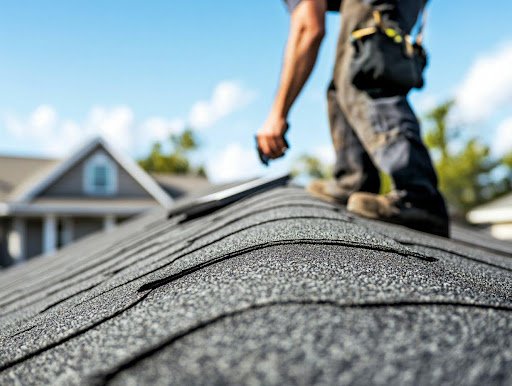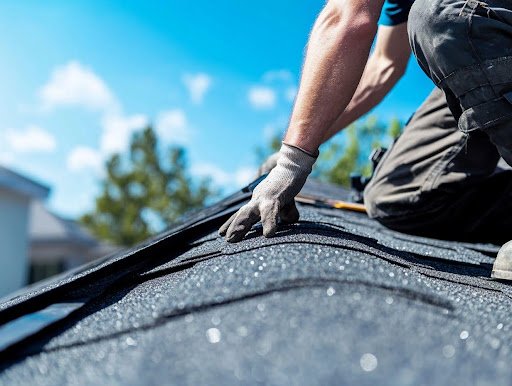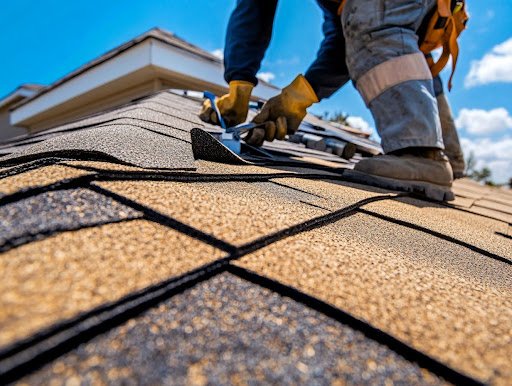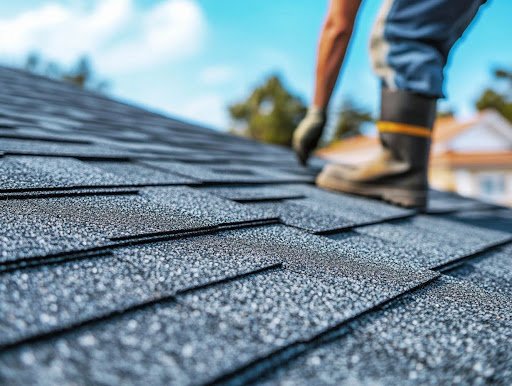What Impacts the Cost of Roof Replacement?
- Trusted Roofing Professionals Sydney
- Free Quotes Available
- Contact Us Now
Replacing a roof represents a substantial investment that can significantly impact a residence’s safety and aesthetic appeal. In Sydney, NSW, various factors determine the roof replacement cost, including the choice of material, the size and complexity of the roof, and the property’s geographical location. Comprehending these factors is essential as homeowners undertake this vital home improvement endeavour. This guide will delineate the elements influencing costs, offer budgeting tips, and present strategies to facilitate cost savings.
Key Takeaways:
- The cost of replacing a roof is affected by material, size, complexity, accessibility, location, labour, old material removal, and additional features.
- To determine the cost, get multiple quotes, consider quality, factor in labour costs, and understand the scope of work.
- Consider affordable materials such as asphalt shingles, DIY options, off-season scheduling, and regular roof maintenance to reduce costs.
Factors That Impact the Cost of Roof Replacement
Several factors significantly impact the overall cost that homeowners in Sydney must consider when replacing their roofs. The choice of roofing material, such as Colorbond or terracotta tiles, can substantially influence expenses.
Furthermore, the size and complexity of the roof are critical elements, as is its accessibility, which affects the labour costs associated with the project. Additionally, it is important to recognise underlying issues, such as existing roof damage and the necessity for removing waste from old roofing materials, which further complicate the cost calculation.
Consequently, conducting a comprehensive roof inspection and consulting with roofing professionals such as Harley & Sons Roofing or Roof & Render SA is essential for accurate budgeting.

Type of Roofing Material
The selection of roofing material represents one of the most significant decisions homeowners face when planning a roof replacement, as different materials entail varying costs and advantages.
In Sydney, homeowners often evaluate a range of roofing options that enhance the aesthetic appeal of their properties and provide essential protection against environmental factors. Colorbond roofing is particularly favoured due to its remarkable longevity of up to 70 years and minimal maintenance requirements, rendering it a cost-effective choice in the long term.
Conversely, the following materials present alternative options:
- Terracotta tiles offer a timeless aesthetic and exceptional insulation properties, typically lasting around 50 years.
- Slate tiles, recognised for their luxurious appearance, can endure for over a century; however, they are associated with a higher price point and necessitate professional installation.
Each of these materials addresses diverse preferences and budgets, underscoring the importance of selecting the appropriate roofing solution that aligns with one’s needs and lifestyle.
Size and Complexity of the Roof
The size and complexity of a roof play a significant role in determining the cost of roof replacement. Larger roofs necessitate more materials and labour, while intricate designs may require specialised skills. Homeowners must consider factors such as the roof’s pitch and the number of peaks or valleys, as these elements can complicate the roofing process and potentially lead to increased expenses for materials and repairs.
When assessing the total expenditure of a roofing project, it is crucial to understand how various factors contribute to the overall cost. Larger roofs typically require more roofing materials, including tiles, underlay, and flashing, which elevates material costs. Labour costs also become more intensive:
- A larger roof area requires more time for skilled labourers to complete the installation.
- Complex roof designs may necessitate specialised contractors with expertise in unique roofing techniques or materials, such as slate tiles or metal roofing.
- Intricate shapes can result in inefficiencies, as navigating around peaks and valleys often extends the time required for installation and may involve additional safety measures.
This interplay of factors impacts the budget and demands careful planning and consideration to ensure that the project remains within financial parameters while striving for a high-quality finish.
Accessibility of the Roof
The accessibility of the roof is a critical factor that can significantly impact the overall cost of replacement. Roofs that are difficult to access necessitate additional safety measures and specialised equipment, which can increase expenses.
A comprehensive roof inspection can identify challenges related to accessibility, such as steep pitches or limited space around the property, potentially requiring more time and effort from roofing professionals.
Understanding the complexities associated with roof accessibility can greatly influence labour costs. Increased man-hours may be necessary for safe navigation, in addition to the potential need for specialised equipment, which can ultimately elevate overall costs.
Implementing appropriate safety measures during the replacement process is essential. It is crucial to ensure that workers are equipped with the necessary harnesses, scaffolding, and safety protocols to mitigate the risk of accidents.
These considerations not only contribute to the financial implications but also highlight the importance of conducting thorough roof inspections that take accessibility challenges into account when planning for repairs.
Location of the Property
The location of a property within Sydney significantly influences the roof replacement cost, as geographical and climatic conditions may require specific materials and designs. Homeowners should be aware that local building regulations and the overall demand for roofing services in their area can result in price fluctuations, so thorough research of local options is essential.
Factors such as proximity to the sea can also affect roofing decisions, as salty air may accelerate the deterioration of certain materials.
Understanding the implications of the local climate is crucial in determining the roof’s lifespan and maintenance requirements. Homeowners must consider the following:
- Regulations regarding building permits and inspections.
- The availability of skilled labour in their region that adheres to local standards.
- Variations in material costs based on regional suppliers and market demand.
By carefully evaluating these elements, individuals can make informed decisions that optimise their investment while ensuring the protection of their homes.

Labour Costs
Labour costs constitute a significant portion of the overall expenses associated with roof replacement, and they vary considerably based on the expertise of the tradespeople and roofing experts involved.
Understanding the formulation of these costs is essential for homeowners contemplating a roof upgrade. The experience level of the labour force is a primary determinant influencing these costs. More seasoned professionals typically command higher rates due to their refined skills and reputation for delivering quality work.
The project’s scope is also a critical factor; larger or more complex jobs requiring specialised equipment may result in elevated labour costs. Additionally, fluctuations in market rates and regional demand can impact the pricing structure.
- Experience: More experienced tradespeople tend to charge higher rates, reflecting their expertise.
- Project Scope: The complexity of the roofing project can significantly alter expected costs.
- Market Rates: Regional demand and supply dynamics also play a role in determining labour pricing.
Given these variables, homeowners should conduct thorough research and obtain multiple quotes to ensure they are receiving the best value for their investment.
Removal of Old Roofing Materials
Removing old roofing materials is an often-overlooked aspect of roof replacement that can significantly contribute to the overall cost. This process encompasses waste removal and the potential need for roof repairs or flashing upgrades, which must be incorporated into the budget when planning a roof overhaul.
When homeowners undertake a roofing project, a critical factor frequently arises: the expense associated with the disposal of obsolete materials and any repairs that may become necessary once the old roofing has been removed. Understanding these costs is essential for effective budgeting.
Waste management entails not only the removal of old shingles and underlay but also compliance with local regulations regarding disposal. Many contractors include this expense in their estimates; however, additional charges may be incurred if specialised disposal services are required or the structure necessitates remediation due to concealed damage.
To facilitate knowledge-based decision-making, it is advisable to obtain detailed quotes from roofing experts that clearly delineate these expenses. This will ensure that adequate funds are allocated for any unforeseen contingencies.
Additional Features or Upgrades
Incorporating additional features or upgrades during a roof replacement can enhance the roof’s functionality and aesthetic appeal; however, such enhancements may also increase overall costs.
Homeowners should carefully evaluate these considerations, as the appropriate enhancements extend the roof’s lifespan, contribute to energy efficiency, and increase the property’s value. For example, high-quality insulation can significantly reduce heating and cooling expenses over time, making it a worthwhile investment. The selection of materials is critical; premium tiles or metal roofing can enhance the home’s appearance while providing superior durability.
Homeowners may explore various options, including:
- Upgraded flashing systems to prevent leaks
- Advanced roof ventilation solutions for improved air circulation and roof longevity
- Solar panel integration for energy savings, particularly effective with Colorbond roofing
While these upgrades may result in higher initial costs, they can yield considerable benefits in the long term, demonstrating how a well-considered investment during roof replacement can provide lasting rewards.
How to Determine the Cost of Roof Replacement?
Determining the cost of roof replacement requires a systematic approach. This involves obtaining multiple quotes from qualified roofing professionals and evaluating the quality of roof materials necessary for the project.
Homeowners should initiate this process by scheduling a comprehensive roof inspection to identify underlying issues. Following the inspection, it is essential to analyse labour costs and clearly understand the project’s scope of work.

Get Multiple Quotes
One of the most effective methods for homeowners to ascertain the roof replacement cost is to obtain multiple quotes from various roofing professionals. This approach presents a range of pricing options and facilitates evaluating the services and warranties provided by different contractors, thereby enabling a well-informed decision.
Acquiring several estimates allows homeowners to examine the specifics of each proposal in greater detail. Comparing quotes reveals not only the financial aspects but also the quality of craftsmanship, materials used, and level of personalised service each contractor offers. This process highlights essential factors such as:
- Warranty terms and coverage
- Project timelines and completion dates
- Licensing and insurance details
- Past customer reviews and ratings
By comprehensively understanding the nuances of each offer, homeowners can select the most suitable expert for the task, ensuring a robust and durable roof and peace of mind throughout the replacement process.
Consider the Quality of Materials
When estimating the cost of roof replacement, it is essential to consider the quality of the materials selected, as this directly influences the longevity and durability of the roof. Investing in higher-quality roofing materials, such as Colorbond or slate tiles, often reduces maintenance costs and extends lifespan.
Selecting the appropriate roofing materials is not solely a matter of aesthetics; it has significant implications for the overall budget. Quality materials generally exhibit greater resistance to weathering, thereby requiring fewer repairs over time.
- Durability: Materials such as Colorbond or clay tiles can withstand harsh environmental conditions, thus decreasing the likelihood of necessary replacements.
- Energy Efficiency: Higher-quality roofs frequently possess superior insulation properties, which can reduce energy expenses, especially with Colorbond materials.
- Insurance Benefits: Insurance providers may offer lower premiums for homes featuring high-quality roofing materials.
Ultimately, understanding the relationship between material quality and long-term costs enables property owners to make informed, cost-effective decisions that enhance the value and resilience of their homes.
Factor in the Labour Costs
Labour costs must be incorporated into the overall budget for roof replacement, as the pricing of skilled roofing professionals and tradespeople can vary significantly. A comprehensive understanding of market rates and the expertise required for specific types of roofing can assist homeowners in making informed decisions that align with their financial plans.
Evaluating labour costs involves assessing the hourly rates of the workers involved and considering their experience and specific skill sets. For example, roofing projects that require advanced techniques or specialised materials may require hiring more experienced professionals, which could result in higher costs.
Additionally, homeowners should consider geographical variations in pricing, as costs can differ markedly from one region to another.
- Research: Investigate local market rates for roofing services.
- Quotes: Obtain multiple estimates to evaluate fair pricing.
- Skill Evaluation: Review the credentials and previous work of potential tradespeople.
By following these steps, homeowners will better understand the importance of aligning labour costs with the necessary skills for successful roofing projects.
Understand the Scope of Work
A clear understanding of the scope of work involved in a roof replacement project is essential for accurate cost estimation. This process includes assessing any necessary roof repairs identified during the initial inspection and ensuring that all aspects of the project are thoroughly documented and agreed upon.
To effectively document the project’s scope, the following key elements should be considered:
- Assessment of Existing Conditions: A comprehensive evaluation of the roof’s current condition is critical for identifying potential challenges that may arise during the replacement process.
- Material Selection: Selecting appropriate materials is vital, as roofing types possess varying lifespans, warranties, and costs.
- Labour Requirements: Clearly defining the workforce needed, including specialists, is essential for appropriate budgeting and scheduling.
- Permits and Regulations: Understanding local building codes and obtaining the necessary permits is essential to avoid future legal complications.
By incorporating these factors into the planning process, a comprehensive scope of work can be established that minimises unexpected issues, enhances transparency, and provides a solid foundation for project execution.

Tips for Reducing the Cost of Roof Replacement
Homeowners seeking to minimise the expenses associated with roof replacement may explore several strategies, such as selecting more economical roofing materials and considering do-it-yourself options when appropriate.
By adhering to a routine maintenance schedule and planning replacements during off-peak seasons, homeowners can substantially reduce costs while ensuring a durable and practical roofing solution.
Choose a More Affordable Roofing Material
Selecting a more affordable roofing material represents one of the most effective strategies for reducing the overall cost of roof replacement without compromising quality. Options such as asphalt shingles and concrete tiles can offer cost-effective solutions while providing durability and aesthetic appeal.
For homeowners looking to achieve financial savings, it is essential to explore various affordable options that align with budgetary constraints and style preferences. Asphalt shingles, for instance, are widely recognised for their accessibility, with prices ranging from £90 to £100 per square—a square refers to a 10-foot by 10-foot area.
Another commendable option is metal roofing, which boasts a significantly longer lifespan than asphalt. However, it typically incurs a higher initial cost, ranging between £300 and £700 per square. Ultimately, making informed investments in materials such as these minimises immediate expenses and enhances property value and long-term resilience.
Below is a summary of popular roofing materials, including Asphalt shingles, along with their respective cost implications and benefits:
- Asphalt Shingles: Cost-effective, easy to install, with a lifespan of 15-30 years.
- Metal Roofing is a long-lasting and energy-efficient choice for Colorbond roofing in Australia. It has a lifespan of 40-70 years.
- Concrete Tiles: Heavy and durable but more expensive, with a lifespan of 50 years, often compared with Terracotta tiles and Slate tiles.
- Wood Shingles: Visually appealing but requiring maintenance, with a lifespan of 30 years.
Consider DIY Options
For homeowners possessing the necessary skills and tools, considering DIY options for minor roof repairs or maintenance can result in substantial cost savings associated with roof replacement, mainly when focusing on roof restoration and minor Roof repairs. It is essential to evaluate the extent of the required work and recognise when professional assistance is necessary to ensure safety and quality.
Homeowners may find that undertaking these tasks can provide a sense of accomplishment and financial benefits, particularly when addressing minor issues such as tile replacement or gutter cleaning. However, it is imperative to consider the following factors:
- The potential hazards of climbing on rooftops
- The complexity of the task at hand
- The long-term consequences of improper repairs
These considerations must be weighed against the desire for cost savings. In instances of more extensive damage or intricate systems such as ventilation and insulation, engaging the services of a roofing professional ensures that repairs are carried out correctly, thereby mitigating the risk of further complications in the future. Professionals possess the expertise to identify hidden issues that may escape the notice of an untrained individual, thus providing comprehensive solutions to guarantee the roof’s longevity.
Schedule Roof Replacement During Off-Season for Average Cost Reduction
Scheduling roof replacement during the off-season allows homeowners to reduce costs, as the demand for roofing services typically diminishes during this period, and obtain expert advice from Roofing experts. This decline in demand often results in lower labour costs and potentially more favourable pricing on materials. Consequently, this strategic timing provides homeowners with decreased expenses and increased availability of roofing professionals.
By opting to conduct roof replacements in seasons such as late autumn or winter, homeowners can take advantage of the reduced workload faced by many contractors, especially in regions like Australia. This situation may enable them to negotiate better rates and secure higher-quality service.
Lower demand directly correlates with lower prices, which means that skilled labourers are more inclined to offer competitive pricing. Additionally, material suppliers may have surplus inventory during these months, leading to discounts on roofing materials that may not be available during peak seasons.
This proactive approach ensures that roofing requirements are addressed more efficiently and yields long-term financial benefits by mitigating the risk of future damage due to deferred maintenance. Furthermore, roof replacement planning during off-peak months can enhance project visibility, allowing contractors to concentrate on individual projects without the urgency associated with busier periods.
Maintain Your Roof Regularly
Regular roof maintenance is essential for extending the lifespan of the Roof and potentially reducing future replacement costs. It often involves services like Roof inspection and restoration.
By proactively engaging in this practice, property owners can significantly enhance the durability of their roofing systems. Regular inspections facilitate the early detection of issues such as leaks, missing tiles, or improper drainage, which can lead to extensive damage if not addressed promptly. Establishing a routine maintenance plan fosters a comprehensive understanding of the roof’s condition, enabling homeowners to make informed decisions regarding necessary repairs.
For optimal results, the following key practices are recommended:
- Schedule biannual professional inspections by trusted Tradies or services like Hipages or Harley & Sons Roofing.
- Clear debris from gutters and downpipes to ensure proper water flow.
- Reinforce flashing around chimneys and vents to prevent leaks.
Frequently Asked Questions
What Impacts the Cost of Roof Replacement and Labour Costs?
The cost of roof replacement can vary depending on several factors, including the size and pitch of the roof, the materials used, and the complexity of the job.
Other factors that can impact the cost include the location of your home and any additional services required, such as repairing structural damage.
How does the size of my roof affect the cost, involving potential Loans.com.au solutions?
The size of your roof is one of the main factors impacting the cost of roof replacement. The larger the roof, the more materials and labour are required, resulting in a higher price. Additionally, larger roofs may have more complex designs and need more time and skill to install new roofing materials properly.
What role do materials play in the cost of roof replacement?
The type of materials used for your roof replacement can significantly impact the overall cost. For example, metal roofing materials tend to be more expensive than traditional asphalt shingles but have a longer lifespan. When making a decision, it is essential to consider the long-term benefits and costs of different roofing materials.
How does the pitch of my roof affect the cost?
The pitch, or slope, of your roof can also affect the replacement cost. Steeper roofs require more caution and specialised equipment for installation, which can increase labour costs. Additionally, roofs with a steep pitch may be more challenging to access, requiring extra time and effort for installation.
Are there any additional costs I should be aware of?
In addition to the cost of materials and labour, other expenses may be considered when planning for a roof replacement. For example, if your roof has structural damage that needs to be repaired, this will add to the overall cost. To identify potential additional fees, it is essential to thoroughly inspect your roof before beginning the replacement process.
Can I save money on my roof replacement?
While roof replacement can be a significant expense, there are ways to save money without sacrificing quality. For example, you can opt for less expensive materials, such as asphalt shingles, or choose a roofing company that offers competitive pricing. Proper maintenance of your roof is also important to extend its lifespan and avoid the need for premature replacement.
